6 Restorative yoga postures for inner peace and healing
Pull through page title
Pull through abstract and format in bold and large font
Restorative Yoga is a great adjunct to active and dynamic movement and static stretching - whether that be other forms of yoga, sports or fitness activities.
It focuses on the relaxation of muscles and tissues and using a variety of props to provide support. With Restorative Yoga there is no physical effort or exertion involved. It is about bringing the body, mind and emotional being to as close a state of equilibrium as possible via connecting with the parasympathetic nervous system (the rest and digest component). The breath is a key element of restorative practices and helps you in the process of both entering and exiting postures.
There are many different postures to choose from - seated, lying down, on the front of the body, on the side and at the wall. The below selection focuses primarily on postures lying down and with support from the wall.
To set up with as much support as possible, props may include: cushions, pillows, blankets, towels, clothing (e.g. jumpers/sweaters), books… These postures can be practiced at any time of the day but can be especially enjoyable in the evening when beginning to wind down.
Most of the postures can be held for as long as it feels comfortable (for example, between 5-15 mins). It’s important to keep the breath steady and easeful to help relax the body, mind and self.
Here are six Restorative Yoga postures to explore:
- Supported Child’s Pose / Salamba Balasana - good for relaxing back muscles and creating gentle compression through hips and knees. Set up with pillows/cushions/blankets (anything that can act as a bolster) longways in front of you. Come to kneeling and set your knees just to the outside of your props. Fold forwards to rest your torso on the props. Adjust the height to suit you. If you want cushioning between your hips and ankles you can add in an extra prop or two there, too.

- Supported Bridge Pose / Salamba Setu Bandhasana - good for resetting the pelvis in neutral and bringing a sense of space and ease to the front body (including hips, ribcage, and chest region). Set up lying down with your choice of props (pillow(s), books/block, blanket(s)) next to you. Peel up from the tailbone, lifting the hips and pelvis and lower back. Place your props under the sacrum (just above the flesh of the butt). Allow your body to relax.
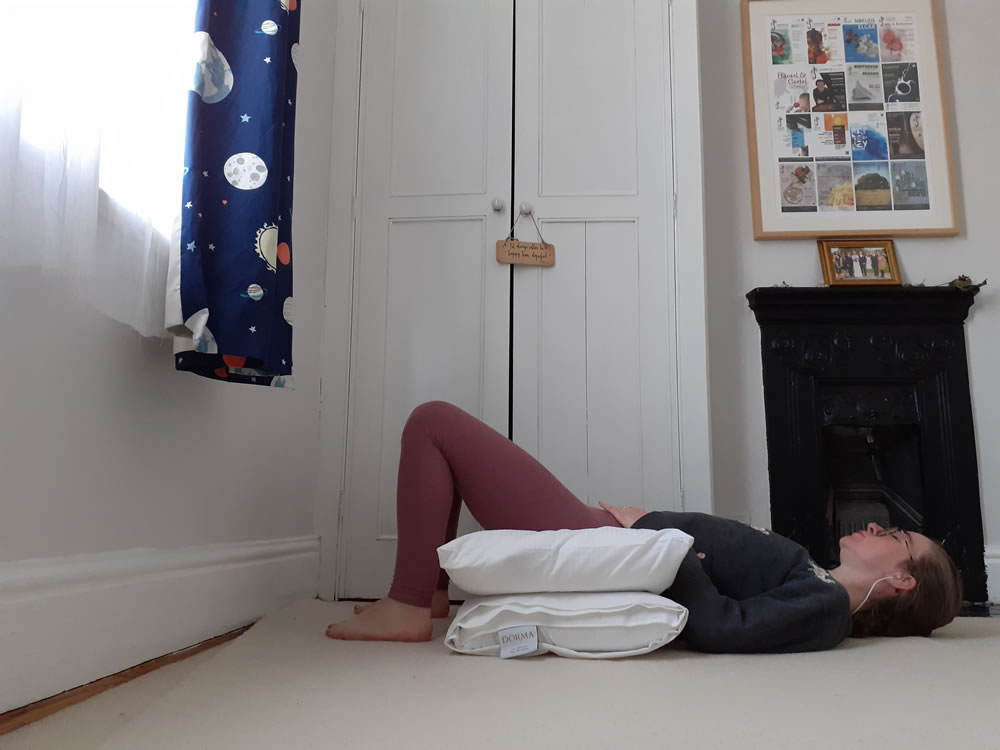
- Constructive Rest - good for bringing space to the lower back and giving the hips a chance to spend time in internal rotation. Lie down on a comfortable surface (blanket, mat, carpet) and set the feet a little wider than hip distance apart. Allow the knees and thighs to draw in to rest together.
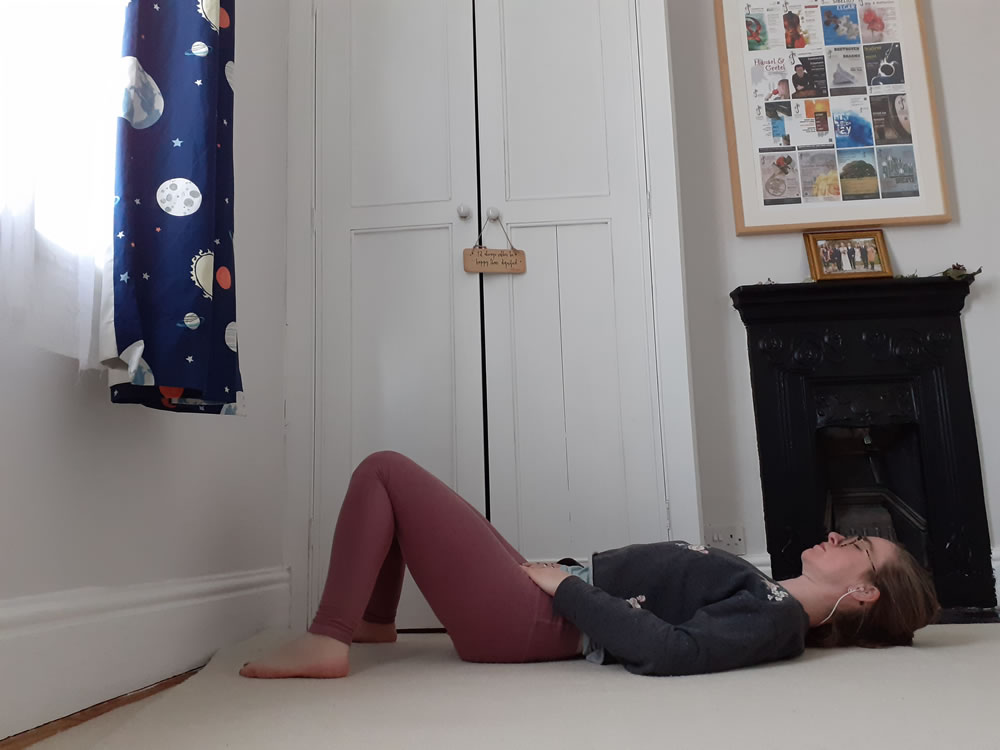
- Head / Neck Release - good for releasing negative tension around the head, neck and shoulder regions (sometimes including headaches). Use a rolled-up blanket or towel or a book or block. As above, lie down on a comfortable surface. Set your prop so its lower edge targets the area just below the two bony prominences at the base of the skull. Allow you head to rest fully. You may like to find some slow, steady movement from side-to-side, pausing at any noticeably tense spots. This is a form of self-myofascial release (MFR). Hold for 2-3 minutes.
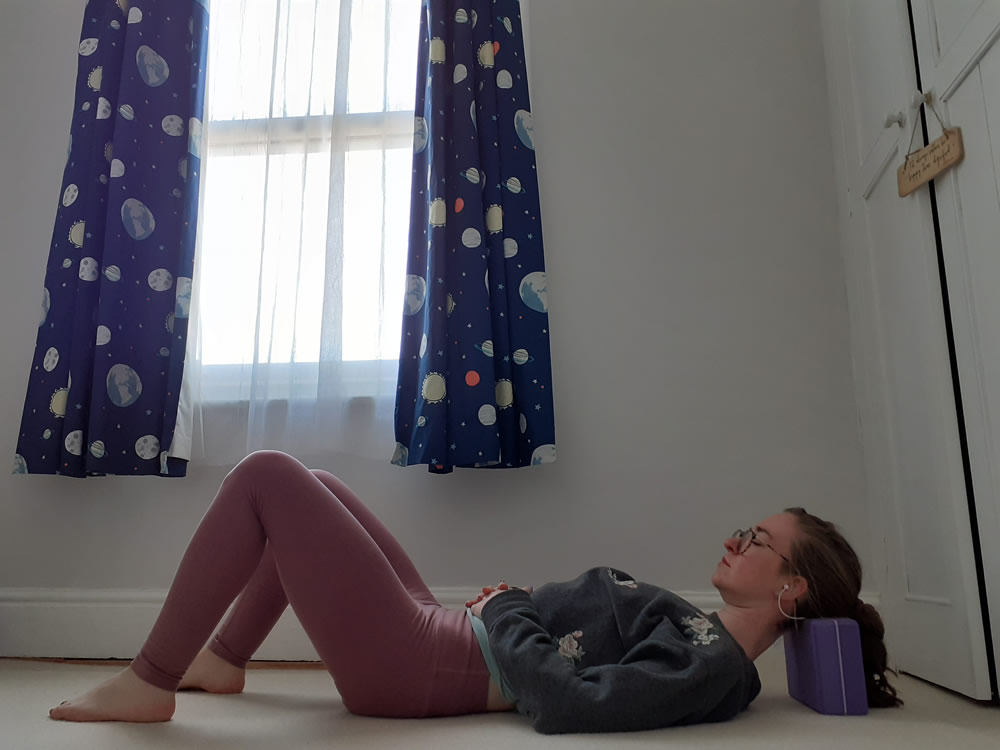
- Legs up the Wall / Viparita Karani - good for a gentle energy boost. This can be done with or without support under the sacrum and hips. If you are opting to use a prop (e.g. cushion, pillow or blanket), set it up against the wall. Sit sideways next to the wall and steadily lower down to lie on your back with your head away from the wall and your legs sliding up. Simply rest your legs together or apart on the wall. Another option is to use a chair to rest your legs on in place of a wall.
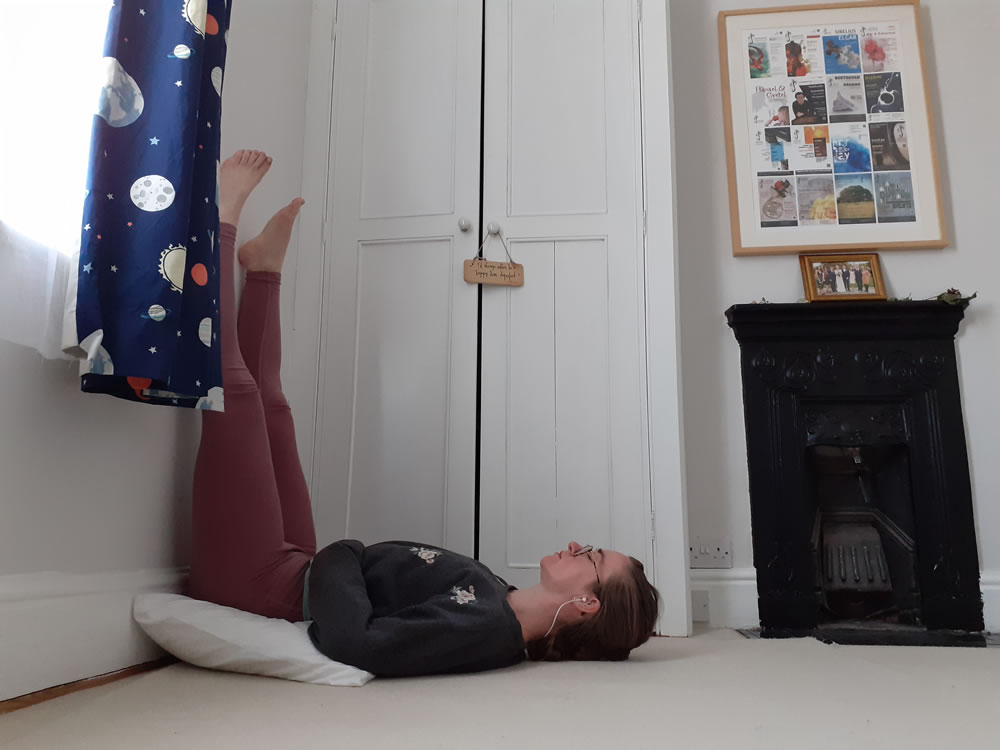
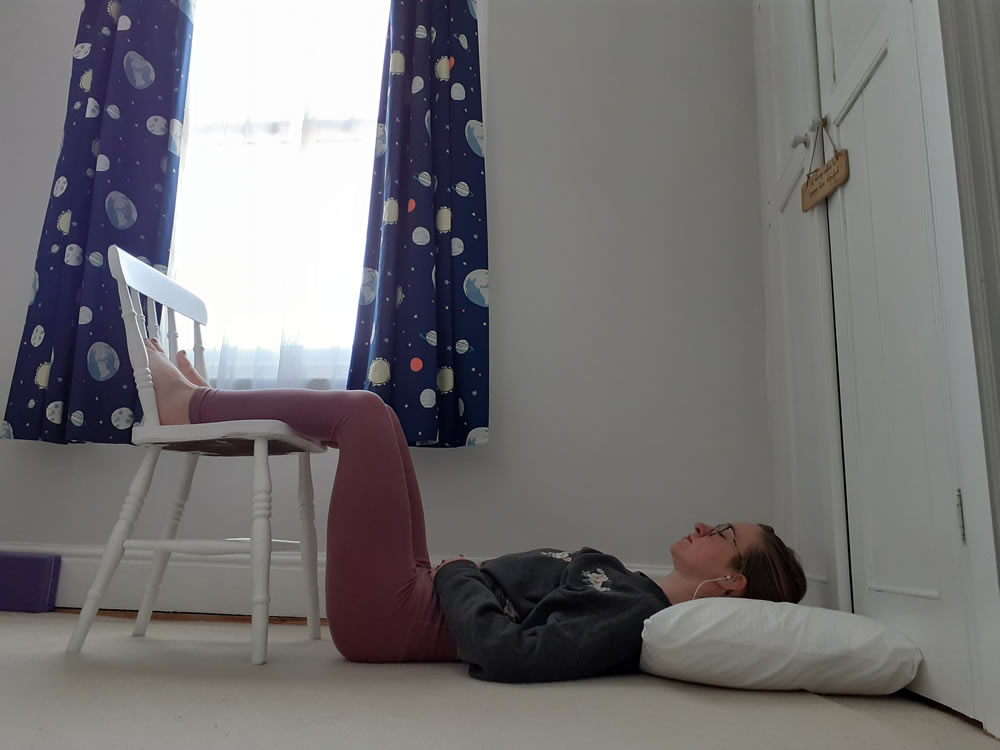
- Supine Bound Angle / Supta Baddha Konasana - good for relaxing hip muscles and inner thighs and creating a sense of space and ease for the front body. Set up with one or two pillows, a combination of cushions, blankets or a bolster in a horizontal layout. Rest the legs over the prop(s) so the feet draw to the ground. Bring the soles of the feet together and allow the hips and thighs to draw into external rotation (out wide) to meet your props. The upper body can rest on the ground or additional props as you like.

Jude Evans
Please note: if you are using the information provided in any Content Core article, please read the terms & conditions.


